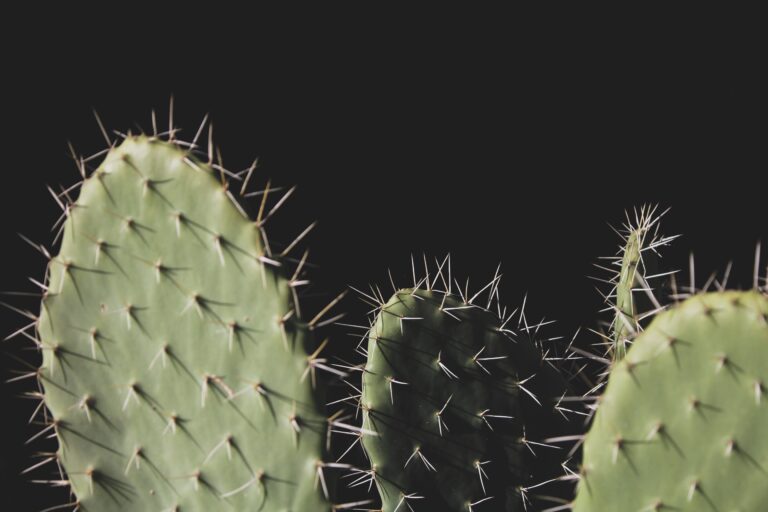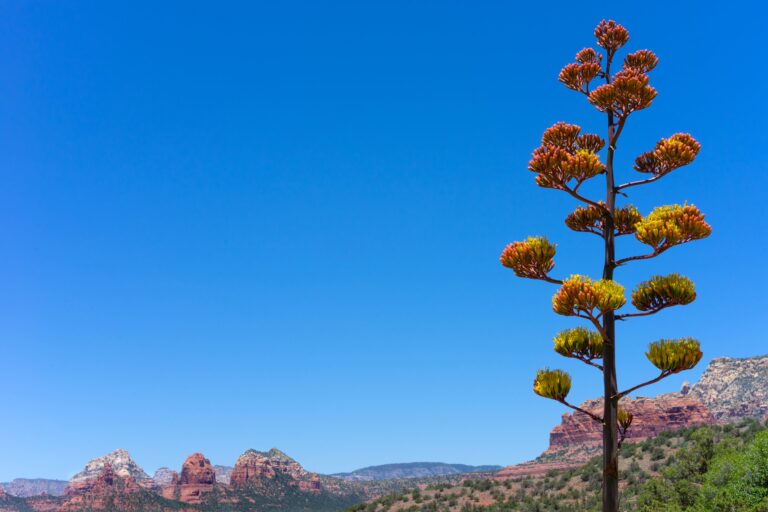Introduction to Agave victoriae-reginae
Welcome to our deep dive into the world of Agave victoriae-reginae, a truly unique succulent plant with roots in Mexico. The beauty of this succulent goes beyond just its appearance. Its unique features and fascinating origins make it a favorite amongst plant enthusiasts and casual gardeners alike.

Imagine standing in a vast desert, the sun blazing down and only the sound of the wind in your ears. Suddenly you spot it – a cluster of Agave victoriae-reginae, standing firm in the challenging landscape, a true testament to endurance and resilience. The plant, commonly known as the Queen Victoria agave or royal agave, is a marvel in itself.
What is Agave victoriae-reginae?
Introducing the Agave victoriae-reginae, a compact, slow-growing evergreen succulent. It belongs to the Agavaceae family and the Asparagales order. Native to Mexico, particularly the Chihuahuan Desert, it’s a plant that’s well-adapted to harsh, arid conditions. This isn’t your ordinary succulent; it commands attention with its unique and striking appearance.
The Appearance of Agave victoriae-reginae
The Agave victoriae-reginae is often admired for its stunning geometric design. The leaves are short, stiff, and dark green, forming a tight rosette. What’s fascinating is that each leaf is outlined by a thin line of white, giving the plant a defined and striking look.
The Significance of Its Name
The name Agave victoriae-reginae carries significant weight. ‘Agave’ is derived from Greek, referring to a plant of admirable nature, while ‘victoriae-reginae’ is in honour of Queen Victoria. The royal connection adds an air of prestige to this succulent, don’t you think?
Join us in further segments as we delve deeper into the captivating world of Agave victoriae-reginae!
Amazing Attributes of the Agave victoriae-reginae
In this segment, we’re taking a close look at Agave victoriae-reginae, a marvel in the world of succulents. With its unique array of features, it’s no surprise that this plant has become a favorite among gardeners and plant enthusiasts across the globe. Its appeal goes beyond its drought-tolerant nature and extends to its structure, shape, rosette, and coloring. Let’s dive in and explore what makes this plant truly special.
Leaf Structure
The leaf structure of Agave victoriae-reginae is one of its most fascinating features. Unlike most plants, the leaves are succulent, thick, and fleshy, with a distinct geometric pattern that gives the plant its signature look. The symmetrical leaves, often colored in hues of deep green and surrounded by a thin, white edge resemble a work of modern art. The plant’s leaves feel as remarkable as they look, with a toughness that makes them endure harsh climatic conditions.
Shape and Rosette
One cannot talk about Agave victoriae-reginae without mentioning its rosette. The tightly compact rosette conveys an elegant spherical shape that adds to the plant’s charm. Its leaves converge to form a stunning circular pattern creating an almost perfect structure that leaves onlookers in awe.
Coloring
In terms of coloring, Agave victoriae-reginae possesses an intriguing array. The core hue is a deep green that verges on the brink of being black. This green gets progressively lighter as it radiates out towards the leaf edges. The white markings that accentuate the leaf edges and the linear patterns impart a mesmerizing contrast that makes this plant a showstopper wherever it is placed.
Witness the Beauty of Agave victoriae-reginae in Action
Words can only do so much justice to the Agave victoriae-reginae’s captivating charm. So, why don’t we delve into the visual realm? Here’s a video that showcases the beauty of this unique succulent:
The Ideal Habitat for Agave victoriae-reginae
One of the most fascinating succulents to grace our homes and gardens is the Agave victoriae-reginae. But what really makes this plant thrive? Let’s take a journey into the optimal living conditions for this unique succulent.
The Agave victoriae-reginae, also known as the Queen Victoria agave or royal agave, is native to the deserts of Northeast Mexico. Here, this plant has adapted to thrive in rocky, sandy, and well-drained soils, basking under the arid sun. Its ability to tolerate drought makes it a resilient choice for home gardeners, especially those living in regions with similar climatic conditions.

When bringing Agave victoriae-reginae into your home, it’s important to mimic its natural habitat as closely as possible. This means finding a spot where it will receive up to 6 hours of partial to direct sunlight each day. But be careful! While these succulents love the sun, too much direct sunlight can lead to sunburn. So, consider a south-facing window or a shaded area in your garden for the best growth.
Temperature is also a crucial factor for the wellbeing of your Agave victoriae-reginae. These plants prefer temperatures between 70 to 90°F (21 to 32°C), but can tolerate cooler climates down to 50°F (10°C). Below this, they risk suffering from frost damage. The key is to avoid drastic fluctuations in temperature.
Despite their tough and resilient exterior, Agave victoriae-reginae do require attention when it comes to water needs. They may be drought-tolerant, but they still need water to survive, especially during the warmer months. However, it’s essential to avoid overwatering as this can cause root rot, a common problem amongst succulents. Watering once per month or even less often during cooler periods works best, ensuring the soil completely dries out between watering sessions.
For more in-depth information on taking care of your Agave victoriae-reginae, the About Succulents website provides a comprehensive guide on growth, care and propagation. It’s a treasure trove of helpful tips and will aid you in ensuring your agave remains a regal fixture in your home or garden.
Cultivation and Care for Agave victoriae-reginae
Let’s take a minute to appreciate the unique beauty of the Agave victoriae-reginae. This succulent is a show-stealer with its thick, rigid leaves accented by silvery-white margins. Whether you’re a seasoned horticulturist or a newbie in the plant world, cultivating and caring for this plant can be an incredibly rewarding experience. Don’t worry, we’ve got you covered with a step-by-step guide.

The first step is propagation. Much like a queen passing her legacy to her offspring, Queen Victoria Agave often produces offsets, tiny replicas of itself, which can be carefully removed and planted separately. Voila! You have a new plant!
Next comes repotting. This succulent prefers well-draining soil, so a potting mix designed for succulents works best. Tip: When choosing a pot, consider one with a drainage hole to prevent water from sitting at the bottom.
Watering an Agave victoriae-reginae has often been compared to making a cup of tea – it’s all about balance. Too much water and your beloved plant may rot; too little, and it might dry out. The key is to water thoroughly and then let the soil dry out completely before watering again.
Lastly, we concentrate on disease control. Inspecting your green friend for discolorations, chewed edges, or signs of insect infestation goes a long way in preserving its health. Remember, a bright green leaf is a happy leaf!
If you can follow these simple steps, then you’re on your way to becoming a proud Agave victoriae-reginae parent. For a more detailed guide on caring for your succulent, I highly recommend you to check this care guide.
Landscaping with Agave victoriae-reginae

Agave victoriae-reginae, a unique and alluring succulent, can be a statement-making addition to any landscape. It’s not just about planting this succulent randomly; it’s about incorporating it thoughtfully to showcase its beauty.
Location Considerations
When you think of landscaping, the first thing that pops up in your mind is probably location. The sun-kissed trails of Arizona? Or the rocky terrains of Mexico? Agave victoriae-reginae is versatile enough to thrive in various locations. For instance, if you’re living in a sunny region, this succulent can be a great add-on by the poolside. On the contrary, if your area is more on the chilly side, consider placing this exotic beauty in a pot and keep it indoors near a south-facing window. Remember, no matter the location, this plant is a sun-lover!
Choosing Companion Plants
Just as we humans love good company, our green friends do too. Choosing companion plants for Agave victoriae-reginae can heighten the visual appeal and also aid in its growth. You can pair it with other desert-like plants such as Golden Barrel Cactus or Red Yucca – they all love the same kind of soil and sunlight! The contrasting colors and shapes of these plants can help your Agave stand out and make a stronger visual impact on your landscape
Factoring in Size
Last but nonetheless important, the size of the Agave victoriae-reginae should be factored in while designing your landscape. Standing tall at around one foot, this plant forms a beautiful spherical shape with its tightly packed leaves. Ensure it gets its spotlight by not overcrowding it with other large plants. One could rather accentuate its beauty by surrounding it with small, colorful succulents or by placing it as a centerpiece.
Landscaping with Agave victoriae-reginae can indeed be an art. The only limit is your creativity. So go ahead and build that dreamy succulent garden or that serene indoor corner with this exotic beauty!
Conservation Status of Agave victoriae-reginae
When we talk about the unique beauty of the Agave victoriae-reginae, there’s one topic we simply cannot skip over – its conservation status. This intriguing succulent species is not just a decorative plant; it’s a part of our natural world that requires our attention and protection, just like any other wildlife species.
Agave victoriae-reginae, considered a ‘crown jewel’ of the succulent world, is facing conservation issues. This striking plant is native to the arid regions of North Mexico and is unfortunately listed as ‘threatened’ due to habitat loss and over-collecting for the ornamental plant trade. It’s not just about preserving a pretty plant; it’s about maintaining biodiversity and balance within delicate desert ecosystems.
But don’t worry, it’s not all doom and gloom. In fact, efforts are being actively made to preserve this species and its natural habitat. Conservation organizations and local communities are working together to protect and restore the natural habitats of Agave victoriae-reginae. For example, there are initiatives to encourage sustainable cultivation practises among local farmers and to educate the public about the importance of this species.
Cultivating for Conservation
Cultivating Agave victoriae-reginae from seed has become a common practice in order to protect the wild populations. In fact, watch this video below to understand the process better:
As you can see, not only does cultivating from seed reduce the pressure on wild populations, but it also provides a wonderful opportunity for us to enjoy these magnificent plants in our own homes!
Every Bit Helps
The conservation of Agave victoriae-reginae may seem like a monumental task, but remember, every little bit helps! From cultivating your own plant from seed to supporting conservation organizations, there are plenty of ways in which you can contribute to the preservation of this stunning and unique succulent.
Frequently Asked Questions about Agave victoriae-reginae
When it comes to the care and maintenance of Agave victoriae-reginae, one of the most commonly asked questions is how to properly take care of this unique succulent. Often hailed as a beautiful centerpiece for indoor plant collections due to its unique markings and rosette shape, ensuring this beauty thrives requires knowledge and hands-on attention.
How Do I Care for My Agave victoriae-reginae?
Agave victoriae-reginae or Queen Victoria agave, is native to dry climates and prefers infrequent but deep watering. After watering, let it dry out completely before the next watering session. Too much water can easily lead to rot. They enjoy full sun to partial shade, and a gritty, well-draining soil is essential to prevent standing water at the roots.
The following video provides a brilliant rundown on the do’s and don’ts when it comes to caring for this unique plant:
How Do I Propagate Agave victoriae-reginae?
One amazing trait of Agave victoriae-reginae is that it often produces pups or offsets at its base. These pups can be gently removed and planted individually, essentially creating a new plant. Make sure to let the wound dry for a week before planting to mitigate the risk of bacterial infections.
What Issues Could Affect My Agave victoriae-reginae?
Despite its hardy nature, the Agave victoriae-reginae is not immune to issues. Overwatering is a common mistake, causing the plant roots to rot. It may also attract pests like mealybugs and scale insects. Ensure your plant is housed in an environment with good air circulation and avoid overwatering to keep these pests away.
Your agave may also experience sunburn if exposed to harsh sunlight for too long. This is especially common in young plants or if the plant is not gradually acclimatized to bright light. You’ll be able to identify this by bleached, brown, or white spots on the leaves. Stay proactive and your succulent will reward you with its unique beauty!



